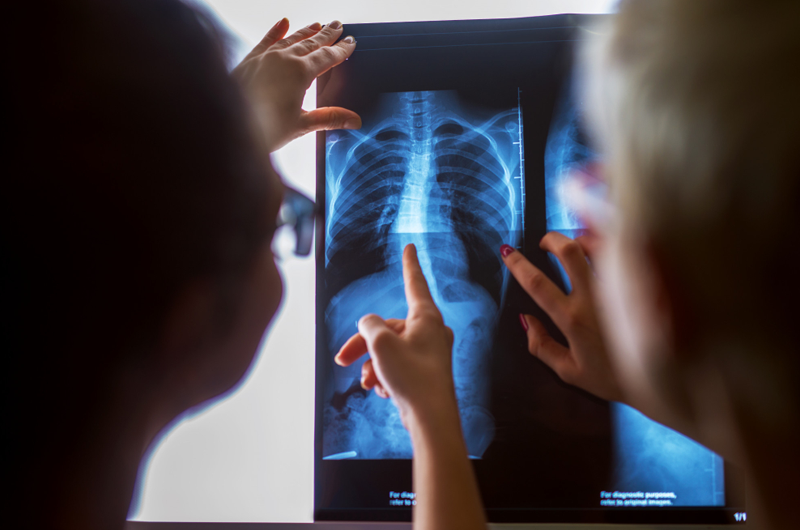Ribs serve as protection for vital organs of the chest cavity such as the heart, lungs, liver, and spleen. There are 12 pairs of ribs attached to the vertebra (backbone) at the back and 10 of which are attached to the sternum by cartilage (breastbone) at the front. Rib fracture is the most common thoracic injury that typically affects the fifth through ninth rib. A rib X-Ray may help diagnose conditions affecting the lungs such as pneumonia, tuberculosis, emphysema, or lung cancer. Medical coding services for radiology involve documenting rib X-ray services with appropriate CPT codes and modifiers. Anatomy, views, laterality, and modifiers are important when coding such radiological exams.
The three types of ribs include True ribs or vertebro sternal ribs, False ribs or vertebro chondral ribs and Floating ribs or vertebral ribs. Joints associated with the ribs include costotransverse joint and costovertebral joint.
CPT Codes
Radiologic exam of the ribs can be documented using CPT codes based on the structure(s) targeted, laterality, and the number of views.
- 71100 Radiologic examination, ribs, unilateral; 2 views
(X-rays are taken unilaterally (either left or right) of the problem side of the ribs with two views: anteroposterior position (AP) or posterior-anterior (PA) views.) - 71101 Radiologic examination, ribs, unilateral; including posteroanterior chest, minimum of 3 views
(X-rays are taken unilaterally (either left or right) of the problem side of the ribs (e.g., AP and oblique views of the left ribs) and frontal view of the chest.) - 71110 Radiologic examination, ribs, bilateral; 3 views
(X-rays are taken bilaterally of the ribs for three views of the ribcage. - 71111 Radiologic examination, ribs, bilateral; including posteroanterior chest, minimum of 4 views
(X-rays are taken bilaterally of the ribcage, including the posterior ribs and PA chest. A minimum of four views are taken.) - 71120 Radiologic examination; sternum, minimum of 2 views
(X-rays are taken of the sternum, with a minimum of two views: AP and lateral.) - 71130 Radiologic examination; sternoclavicular joint or joints, minimum of 3 views
(X-rays are taken of the sternoclavicular joint or joints a minimum of three views (with and without weights).)
Modifiers
The X-ray services described by a single CPT® code include a professional component and a technical component. While the professional component includes the physician’s supervision, interpretation, and a written report, the technical component of a service includes the provision of all equipment, supplies, personnel, and costs related to the performance of the exam.
- To claim only the professional portion of a service, it is recommended to attach modifier 26 Professional component to the appropriate CPT® code.
- To claim only the technical portion of a service, modifier TC Technical component is used with the appropriate CPT® code. Fees for the technical component are reimbursed to the facility or practice responsible for these costs.
Global service includes both the professional and technical components of a single service. When reporting a global service, no modifiers are necessary to receive payment for both components of the service. If the provider who interprets the film also owns the equipment, the global procedure code is submitted at full fee.
However, in radiology medical billing, chest X-ray cannot be coded like rib X-ray. For a two-view chest x-ray and unilateral rib x-ray performed on the same patient on the same date, you should report both 71020 (Radiologic examination, chest, two views, frontal and lateral) and 71100 (Radiologic examination, ribs, unilateral; two views). Payers should reimburse both 71020 and 71100 because they involve separate films taken to evaluate different anatomic structures.




